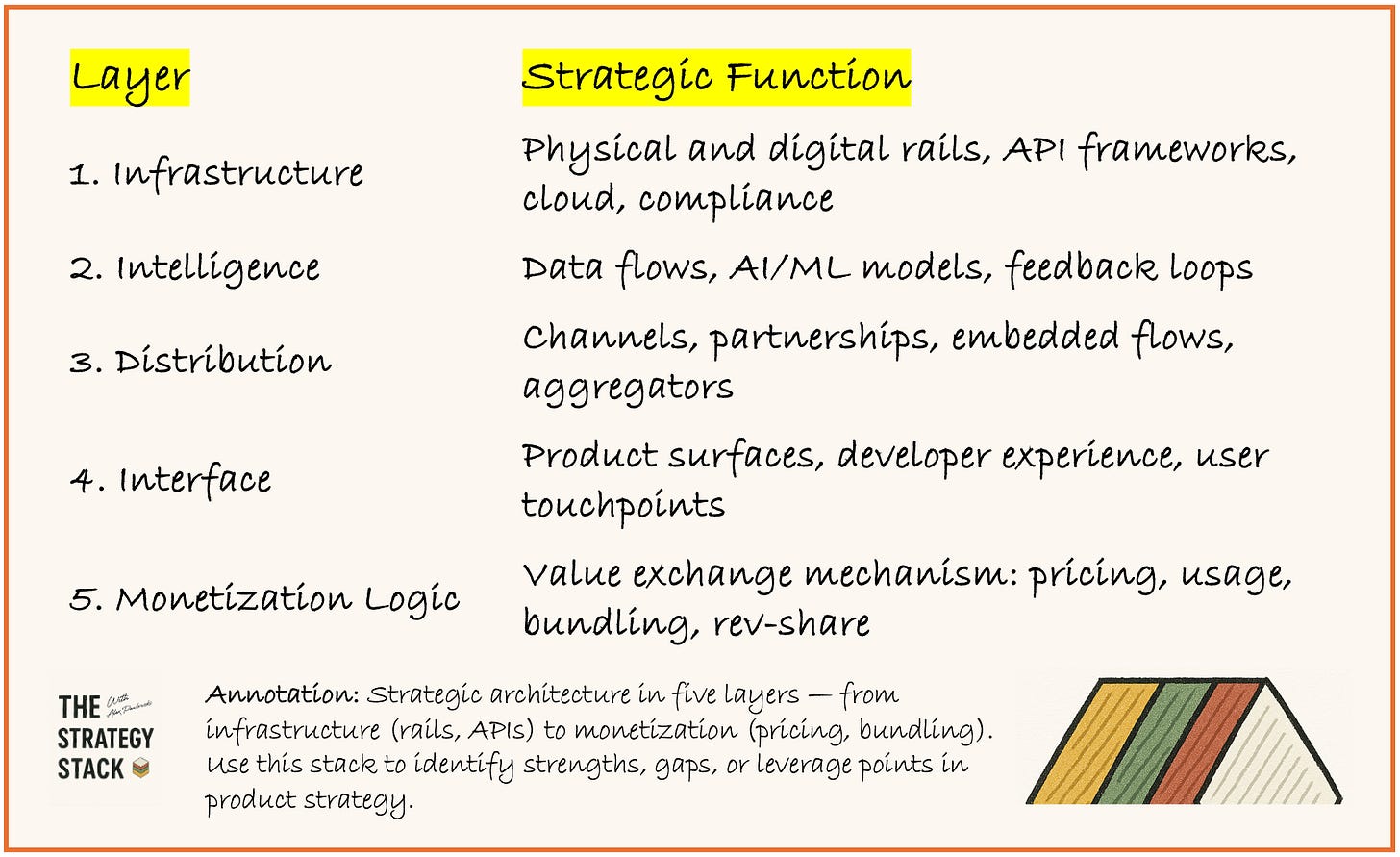How Modern Business Models Actually Work: A Systems View for 2025
#84: 1.1 — What if your business model isn’t a plan, but a live, modular system running in real time?
In 2025, reducing a digital business model to a monetization plan isn’t just simplistic — it’s strategically dangerous.
A modern business model isn’t a spreadsheet or a static canvas. It’s a living architecture — a recursive system of value creation, delivery, and adaptation that evolves with every interaction, API, and market signal.
Today’s most competitive firms don’t just design business model innovation — they operate it. Their business models are modular systems that flex, learn, and self-optimize in real time.
TL;DR — Business Models as Live Systems
In 2025, a digital business model is not a plan but a modular, adaptive system that integrates technology, intelligence, and market feedback loops.
Five interconnected layers form the new Business Model Stack:
Infrastructure — foundational technology and physical assets
Intelligence — AI, analytics, and learning systems
Distribution — channels and ecosystems for reach
Interface — user interactions and data capture
Monetization Logic — algorithmic, evolving revenue design
Unlike the Business Model Canvas (BMC) — a snapshot of nine boxes — this new architecture is recursive: each layer feeds the others continuously.
Table of Contents
Introduction: Why Static Models Fail in 2025
The Business Model as a Living Architecture
Five interconnected layers explained
How recursion works between them
Why the Business Model Canvas Isn’t Enough
Strengths of BMC
Its limits in dynamic ecosystems
The Better Design Sequence for Digital Firms
Why to start with monetization logic first
Recommended order: Monetization → Distribution → Interface → Intelligence → Infrastructure
How Systemic Models Work in Practice
Example: UX → AI → Pricing feedback loops
Data-driven evolution in live environments
Case Study: Amazon Prime as a Multi-Layer System
Real-World Parallels
Stripe → API-first distribution
Notion → Interface-led growth
Shopify → Monetization across the stack
Anthropic → Intelligence as embedded service
Key Questions for Strategy Teams
Diagnosing bottlenecks, dependencies, and risks
Moves for Practitioners
Model mapping, dependency audits, flexibility design, signal reviews
Key Takeaway: Business Model as OS
Why Static Models Fail
The traditional business model canvas remains a useful conceptual tool. But for digital firms operating in cloud ecosystems and AI-driven markets, it’s far too static.
The BMC shows you where value exists.
A digital business model system shows you how value moves.
Markets no longer change annually — they evolve weekly. Ecosystems, APIs, and AI agents now co-shape distribution and monetization logic in real time. A static model can’t adapt to that.
Key Concept: The Business Model as Architecture
A digital business model functions more like an operating system than a plan. Its five layers form a dynamic architecture where each part influences and learns from the others:
Each layer adapts dynamically:
Interface data powers Intelligence
Intelligence refines Monetization
Monetization logic reshapes Distribution incentives
This creates continuous, compounding adaptation — the essence of business model innovation.
Why This Matters
Most teams still use the Business Model Canvas (BMC) as a planning tool—which works well early on (still recommended). But the BMC presents a flat snapshot. Today’s digital firms operate within multi-layered systems that change dynamically.
Where the BMC gives you nine tidy boxes, the system stack gives you:
Feedback flows (e.g. Netflix uses Interface data to reshape pricing models)
Modular toolchains (e.g. Intelligence evolves separately from Infrastructure)
Embedded complexity (e.g. Stripe’s Interface is its Distribution)
A Better Design Sequence for 2025
Traditional models start with infrastructure or product.
Modern digital business model design starts with monetization logic — the economic engine — and builds outward.
Recommended sequence:
Monetization Logic → What value is captured and how?
Distribution → Through which channels and ecosystems?
Interface → How do users interact and share data?
Intelligence → How does the system learn and adapt?
Infrastructure → What foundation supports scaling and integration?
This approach transforms business model design from static analysis into strategic architecture.
Keep reading with a 7-day free trial
Subscribe to The Strategy Stack to keep reading this post and get 7 days of free access to the full post archives.



